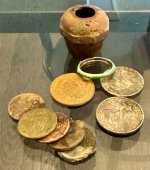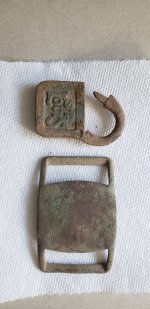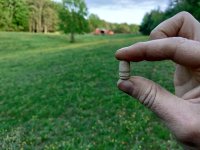Hi folks new to the site here, figured I’d pick a few Brains if I can so I’m heading towards a new season prospecting in NL. When the winters done dumping snow I’ll be headed to a large hill in a volcanic rock zone. Evidence of pb and cu in river runoff and anomalous amounts of gold as well which tells me I’m possibly in an area where a vms deposit could be and I’ve narrowed it down to a specific side of the hill due to silt samples etc. Wondering the viability of using a soil resisitivity meter to locate the exact spot and how accurate this method can be. Any and all info appreciated guys thank you
so I’m heading towards a new season prospecting in NL. When the winters done dumping snow I’ll be headed to a large hill in a volcanic rock zone. Evidence of pb and cu in river runoff and anomalous amounts of gold as well which tells me I’m possibly in an area where a vms deposit could be and I’ve narrowed it down to a specific side of the hill due to silt samples etc. Wondering the viability of using a soil resisitivity meter to locate the exact spot and how accurate this method can be. Any and all info appreciated guys thank you

 so I’m heading towards a new season prospecting in NL. When the winters done dumping snow I’ll be headed to a large hill in a volcanic rock zone. Evidence of pb and cu in river runoff and anomalous amounts of gold as well which tells me I’m possibly in an area where a vms deposit could be and I’ve narrowed it down to a specific side of the hill due to silt samples etc. Wondering the viability of using a soil resisitivity meter to locate the exact spot and how accurate this method can be. Any and all info appreciated guys thank you
so I’m heading towards a new season prospecting in NL. When the winters done dumping snow I’ll be headed to a large hill in a volcanic rock zone. Evidence of pb and cu in river runoff and anomalous amounts of gold as well which tells me I’m possibly in an area where a vms deposit could be and I’ve narrowed it down to a specific side of the hill due to silt samples etc. Wondering the viability of using a soil resisitivity meter to locate the exact spot and how accurate this method can be. Any and all info appreciated guys thank you






